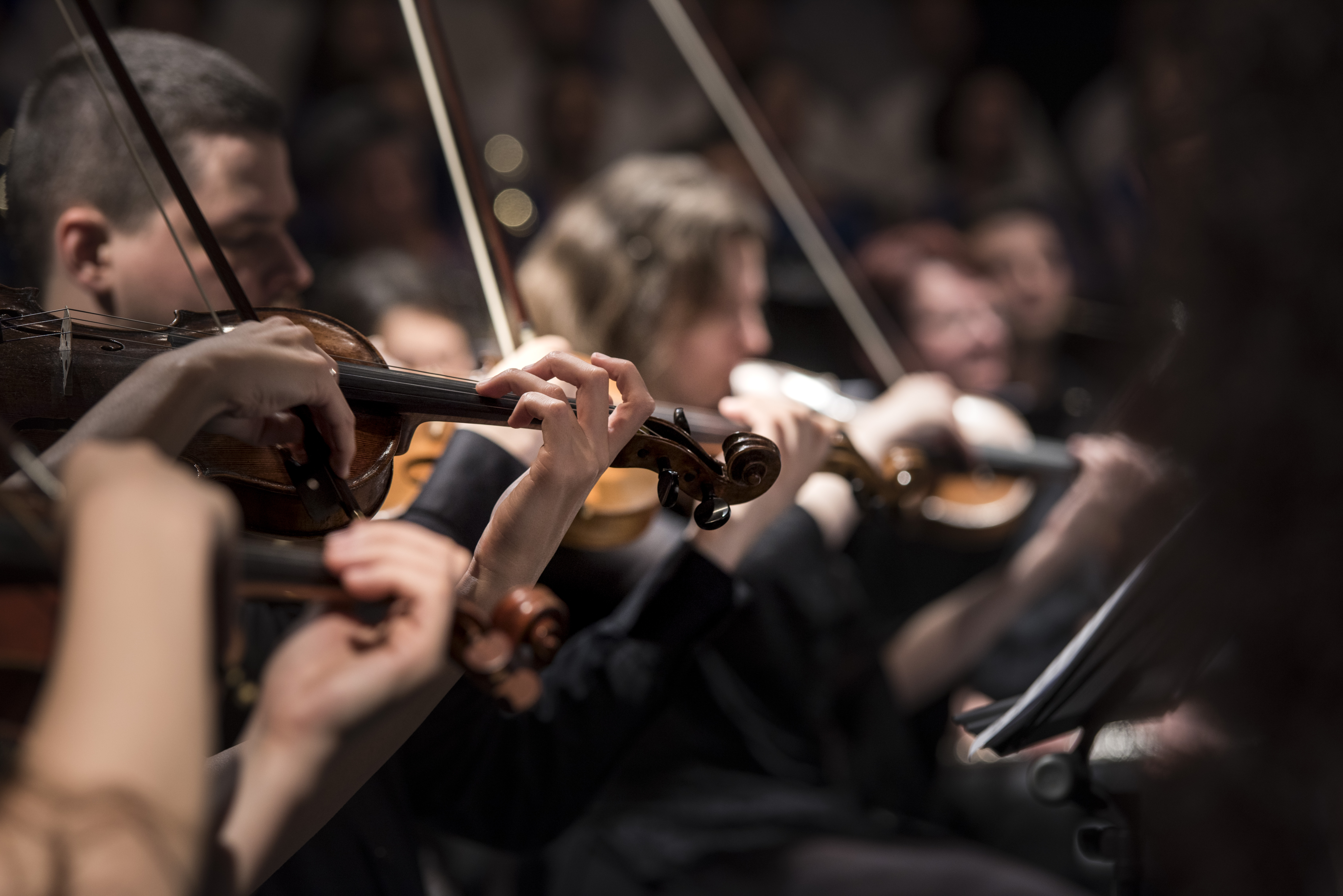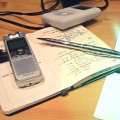
You are not a fan of classical music? Great, then this is the right article for you! These classical music pieces may not be found in your playlist, but we are very sure that you know them still!
In this article, we want to show you 15 classical music pieces that you have surely heard before, even when you can not pinpoint down where exactly. You can hear them in commercials, TV series, movies – or even in other music. We are sure that some if not all of the following pieces will have an “aha-effect” on you. 😉
Fifteen Classical Music Pieces You Know
From Beethoven to Tchaikovsky – start the videos below and find out where you have heard this music before.
Für Elise – Ludwig van Beethoven
The famous Bagatelle No. 25 in A minor from Ludwig van Beethoven is more commonly known as “Für Elise” which translates to “For Elise”. There is quite some speculation about who this mysterious Elise may have been, it is most likely that Beethoven dedicated the piece to Theresa Mafatti, one of his students.
If you practiced the piano as a child or sometime in your life, it is more than likely that you have stumbled upon “Für Elise” sooner or later. If you didn’t learn to play the piano at one point in your life, the tunes of this classical piece may still sound familiar to you:
- In 2002, rapper Nas used samples of “Für Elise” in his hit single “I Can“
- The 2003 film Elephant, inspired by the Columbine school shooting, makes use of “Für Elise” in a haunting way
- In “A Charlie Brown Christmas”, Schroeder performs “Für Elise”, explaining the piece’s association with Christmas
- The series “Two and a Half Man” makes use of “Für Elise” as the phone ring tone of Alan Harper
In The Hall Of The Mountain King – Edvard Grieg
Edvard Grieg composed “In The Hall Of The Mountain King” (or “I Dovregubbens hall” in Norwegian) for the play Peer Gynt. It was used for scene 6 in act 2. Thus, it is also known as Peer Gynt’s Suite No. 1, Op. 16.
Many references to this piece by the Norwegian composer can be found in pop culture:
- “In The Hall Of The Mountain King” has been interpreted by many music artists, including:
- Apocalyptica
- The Who
- Savatage
- The piece has also been used in some movies, such as:
- Rat Race
- The Social Network
- “In The Hall Of The Mountain King” was partly used for the opening song of the cartoon series “The Adventures of Sonic The Hedgehog”
- Advertisements for the Alton Towers resort make use of the tunes of “In The Hall Of The Mountain King”
Dance Of The Sugar Plum Fairy – Pyotr Ilyich Tchaikovsky
“Dance Of The Sugar Plum Fairy” is part of the ballet “The Nutcracker”. It appears towards the end in act 2, scene 14. This particular piece is among the most recognizable ones of the ballet.
Due to it’s up-beat nature and happy tune, “Dance Of The Sugar Plum Fairy” is commonly used in pop culture:
- A cappella band Pentatonix released “Dance Of The Sugar Plum Fairy” on their holiday album in 2014
- According to Beavis, “Dance Of The Sugar Plum Fairy” sounds like Ozzy when it was used in the opening of the Beavis and Butt-head Seasons’s Greetings video
- In the MythBusters Demolition Derby Special, heavy metal music and “Dance Of The Sugar Plum Fairy” are used to contrast the working styles of Adam and Jamie
- In the NEW version of Tetris, “Dance Of The Sugar Plum Fairy” is available as background music
- The tune can be found in many other video games as well, including:
- Bioshock
- Lemmings
- Wii Winter Olypics
- Kingdom Hearts 3D: Dream Drop Distance
- Grand Theft Auto V
Orchestral Suite No. 3 In D Major – Johann Sebastian Bach
The “Orchestral Suite No. 3 In D Major” is the best known out of the four orchestral suites Bach composed. Even more famous is the second movement of the suite that is also known as “Air on the G string”. It is a part of the suite that is composed differently than the rest and places the violins in the foreground. This solo for the string instrument was actually not arranged by Bach himself, but by August Wilhelmj, a violinist.
Lets see where you may have heard this one before:
- Most well known is, probably, the usage of “Orchestral Suite No. 3 In D Major” in “Everything’s gonna be alright” by Sweetbox from 1997
- The “Orchestral Suite No. 3 In D Major” often plays in the background of many movies such as:
- Sleepy Hollow
- Se7en
- Harold & Kumar Escape from Guantanamo Bay
- Halloween
- The Devil’s Advocate
- Many TV series also use “Orchestral Suite No. 3 In D Major”, such as:
- How I met Your Mother
- The Looney Toons Show
- Of course, the piece is just as popular in video games, including:
- Gran Turismo 4
- Gun Dealer
- It was also used for an advertisement for Hamlet cigarettes
Pachelbel’s Canon – Johann Pachelbel
This piece is commonly known as, simply, “Pachelbel’s Canon”, but is also referred to as “Canon in D Major”. During Pachelbels life, his music was quite popular, but got forgotten soon thereafter. Only in 1970, the “Pachelbel’s Canon” regained popularity and was performed more frequently again. Up until the early 2000s, the canon heavily influenced many other musical artists.
Lets have a look at the pop music that was influenced by this piece and other instances where you may have heard “Pachelbel’s Canon” before:
- The following songs used tunes or samples from “Pachelbel’s Canon” to a bigger or lesser extend:
- Coolio – C U When U Get There
- The Farm – All Together Now
- Pet Shop Boys – Go West
- Other artists have shown the influence of “Pachebel’s Canon” in their work, like:
- Green Day – Basket Case
- Ralph McTell – Streets Of London
- Oasis – Don’t Look Back In Anger
- The canon was likewise heavily used in different TV Series, such as:
- New Girl
- Grimm
- How I Met Your Mother
- Parks And Recreation
- Doctor Who
- The Simpsons
- House
- Some video games also didn’t shy away from using “Pachebel’s Canon”, like:
- BioShock Infinite
- Gran Turismo 4
- Of course, it also made it’s way in some movies and short films, such as:
- Disney’s Tangled Ever After
- The Proposal
- Fantastic Four: Rise Of The Silver Surfer
- Wedding Crashers
- Dude, Where’s My Car
Moonlight Sonata – Ludwig van Beethoven
The classical piece known as Moonlight Sonata (or German “Mondscheinsonate”) is actually Beethoven’s Piano Sonata No. 14. It is said to have inspired Frédéric Chopin to compose his “Fantasie-Impromptu”. While the piece was, even in Beethoven’s times, critically acclaimed, he considers it one of his less good compositions for the piano. he name Moonlight Sonata was attributed to the piece by a critic from Berlin who compared it to a nightly scenery on the Lucerne lake (Switzerland).
This masterpiece by Beethoven has left it’s imprint in pop culture as well:
- After hearing Yoko Ono playing “Moonlight Sonata” on the piano, John Lennon was inspired to write “Because” for The Beatles
- John Lennon actually modeled “Because” after what he heard when he asked Yoko Ono to play the song backwards
- “Moonshine sonata” was used in many movies such as
- Immortal Beloved
- Total Recall
- Misery
- Confessions of a Dangerous Mind
Eine Kleine Nachtmusik – Wolfgang Amadeus Mozart
Mozart’s “Eine Kleine Nachtmusik” (translating to “A little night music”) has been composed as “Serenade No. 13 for strings in G major” by the Austrian prodigy. It was composed in Vienna while Mozart worked on his opera “Don Giovanni”. Since many of Mozart’s serenades was written as a commission, it’s possible that “Eine Kleine Nachtmusik” was one as well.
“Eine Kleine Nachtmusik” is oftentimes associated with ballrooms and fancy dancers. Hence why it’s often used for such scenes in different movies. Lets see where else you may have heard it before:
- Among the many movies that use “Eine Kleine Nachtmusik” are:
- Tim Burton’s Batman
- Alien
- Daddy Day Care
- There’s Something About Mary
- Ace Ventura
- Charlie’s Angels
- “Eine Kleine Nachtmusik” is also the title of a German movie from 1940 about the live of Mozart around the time he wrote “Don Giovanni”
Habanera – Georges Bizet
“Habanera” is the more well known name of “L’amour est un oiseau rebelle” (translating to “Love is a rebellious bird”), an aria from the opera “Carmen” by Georges Bizet. This aria marks the first appearance of the titular character of Carmen in the opera. Bizet adapted the aria from a piece written by a composer that dies only ten years prior to the composition of Carmen, Sebastián Yradier.
This famous French aria can be heard in various movies and other media.
- The following movies used “Habanera” at one point, among others:
- Pixar’s Up
- Bad Santa
- Superman Returns
- 11:14
- The “Habanera” can also be heard in the episodes of many TV series, such as:
- Doctor Who
- Glee
- Mad Dogs
- Many cartoon series also made use of the aria, including:
- The Ren & Stimpy Show
- Animaniacs
- Courage The Cowardly Dog
Ode To Joy – Ludwig van Beethoven
The “Ode To Joy” (also known by the German name “Freude Schöner Götterfunken”) was part of the final movement of Beethoven’s Ninth Symphony. It’s the musical setting for a poem written by German poet Friedrich Schiller.
Why does it sound so familiar?
- In 1972 (and later again in and 1985), “Ode To Joy” was adopted as the official anthem of the European Union
- Many movies have also made use of the pompous ode, such as:
- A Clockwork Orange
- Help!
- Die Hard
- From 1996 to early 1998, WWF wrestler Triple H (still known as Hunter Hearst Helmsley at that point) used “Ode to Joy” as his entrance song
- Many television stations play the ode as the closing theme for the Summer Olympics and Winter Olympics
- It was also used in the anime “Neon Genesis Evangelion”
Morning Mood – Edvard Grieg
Once more, Norwegian composer provided a memorable and often-used piece of music for Henrik Ibsen’s Peer Gynt. “Morning Mood” (or original Norwegian (“Morgenstemning”) is the first movement of the “Suite No. 1, Op. 46”. This happy and light tune is often associated with, as the name suggests, a beautiful morning with birds awakening and the sun rising.
Just like “In The Hall Of The Mountain King”, “Morning Mood” can be found in many pop cultural instances:
- The German band In Mood used “Morning Mood” as a sample for their collaboration with Juliette to create the song “Ocean Of Light“
- In the popular cartoon series The Simpsons, “Morning Mood” plays as a cheeseburger is gracefully unwrapped in the early sunlight, among other usages as well
- Movies made use of the happy “Morning Mood” to set a scene as well, including:
- Soylent Green
- The Book Of Life
- Jackass 3D
- “Morning Mood” also found it’S place in many TV Series apart from The Simpsons, such as:
- Modern Family
- Misfits
- The Big Bang Theory
- Animaniacs
Wilhelm Tell Overture – Gioachino Rossini
As many pieces on this list, the “Wilhelm Tell Overture” was created for an opera of the same name. Especially the finale of the overture is well known and commonly used in pop culture nowadays.
Following are some of the most prominent uses of the “Wilhelm Tell Overture” in more modern times:
- The “Wilhelm Tell Overture” was famously used as the theme song for both “The Lone Ranger” (radio show, TV series and movie) and “The Adventures Of Wilhelm Tell” (TV series)
- It was heavily and often used by the Warner Borthers’ icons Bugs Bunny and Duffy Duck in various episodes of the series
- Other TV series used the “Wilhelm Tell Overture” as well, including The Flinstones
- Many advertisements also used the overture since it is apparently suiting to target a male audience, such as:
- Reebok
- Honda
- Lark Cigarettes
- Most famously, the “Wilhelm Tell Overture” was used in the “A Clockwork Orange” movie during the infamous orgy scene
- Many sporting events liked and still like to utilize the overture, like:
- the Hong Kong Jockey Club
- the Indiana University for their baseball games
- Covers and adaptations of the overture were particularly popular by rock and metal bands such as Manowar in their “William’s Tale”
Ride Of The Valkyries – Richard Wagner
“Ride Of The Valyries” (or German “Walkürenritt”) is the most famous part of Richard Wagner’s opera “Die Walküre”. In the opera, the piece is used for a scene the eight Valkyrie sisters of Brünnhilde. Greeting each other with their battle cries, the eight sisters get ready to bring the fallen heroes to Valhalla.
Especially in it’s instrumental version, it is frequently used until today:
- Wagner’s “Ride Of The Valkyries” is most famous for its usage in many movies, such as:
- Apocalypse Now
- Rango
- Watchmen
- Skyfall
- In different television series, “Ride Of The Valkyries” could be heard as well, for example:
- The Simpsons
- Breaking Bad
- The Wire
- Scrubs
- From September 2010 until today, “Ride Of The Valkyries” or adaptations of the song are used as WWE performer Daniel Bryan’s entrance music
- “Ride Of The Valkyries” also inspired the string part in “You Spin Me Round (Like A Record)” by Dead Or Alive
- Different companies also used “Ride Of The Valkyries” for their commercials:
- Apple
- IHOP
- Nissan
- Toyota
Boléro – Maurice Ravel
Initially, the ballet “Boléro” was composed as a commission by Ravel, becoming his most famous composition. It’s most prominent features are the increase of volume and speed throughout the piece.
rave”Boléro” has been used in pop culture a lot outside of the usual ballet setting it was written for:
- Rufus Wainwright’s song “Oh What A World” uses “Boléro” as a counter-melody
- Frank Zappa admired the piece so much that he even performed it on his 1988 world tour
- Next to the film titled after the “Boléro”, it was used for a variety of other movies as well, including:
- 10
- Eddie The Eagle
- Many television series played the ballet, such as:
- Doctor Who
- Digimon Adventure
- IT Crowd
- Baby Einstein
- Initially, “Boléro” should have been used for Nintendo’s The Legend Of Zelda, however due to copyright issues, an original soundtrack was composed
The Blue Danube – Johann Strauss II
“The Blue Danube” is how Johann Straus II’s waltz “An Der Schönen Blauen Donau” (lit. “By The Beautiful Blue Danube”) is known in English. It’s one of the most well known pieces of the Austrian composer. Even though it was not too popular during Strauss’ time, the instrumental version particularly gained wide popularity in later years.
Thus, it’s no wonder “The Blue Danube” left its mark on pop culture:
- The Viennese version is the unofficial national anthem of Austria
- It is, until today, played at midnight on New Year’s Eve on Austrian public television and radio stations
- Most prominently “The Blue Danube” was used in 2001: A Space Odyssey
- Other movies where you can hear “The Blue Danube” include:
- Horton Hears A Who!
- Tooth Fairy
- As a parody, “The Blue Danube” plays in a The Simpsons episode where Homer Simpsons travels to space
- The waltz found it’s place in other television series as well, such as:
- Lost
- Futurama
- The Big Bang Theory
- Sherlock
- Among the advertisements that use “The Blue Danube” were:
- HP
- Emirates
- JBL
- Doritos
- Crayola
Also Sprach Zarathustra – Richard Strauss
“Also Sprach Zarathustra” (“Thus Spoke Zarathustra” in English) is the musical interpretation of a philosophical novel by Friedrich Nitzsche, composed by Richard Strauss. The piece is known as a tone poem.
Especially the beginning of “Also Sprach Zarathustra” is easily recognizable from different movies, series and more:
- Most prominently, “Also Sprach Zarathustra” was used in 2001: A Space Odyssey
- Other movies that made use of the tone-poem include:
- Zoolander
- Magnolia
- The Simpsons Movie
- Pixar’s Toy Story 2
- Pixar’s Wall-E
- “Also Sprach Zarathustra” was often used either individually or in direct reference to 2001: A Space Odyssey in different television series as well, such as:
- The Big Bang Theory
- Futurama
- 3rd Rock From The Sun
- The Simpsons
- Almost through all his career, WCW and WWE star Ric Flair used “Also Sprach Zarathustra” as his entrance theme, handing it down to his daughter Charlotte who uses a remixed version for her WWE entrances



